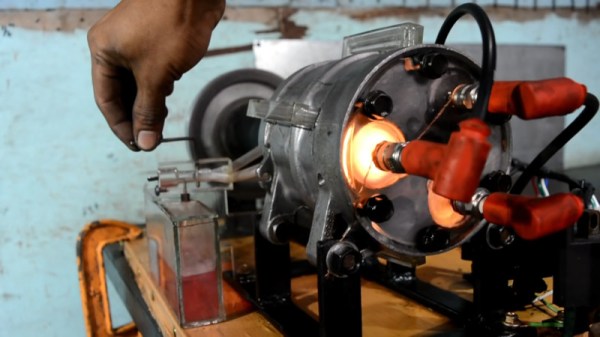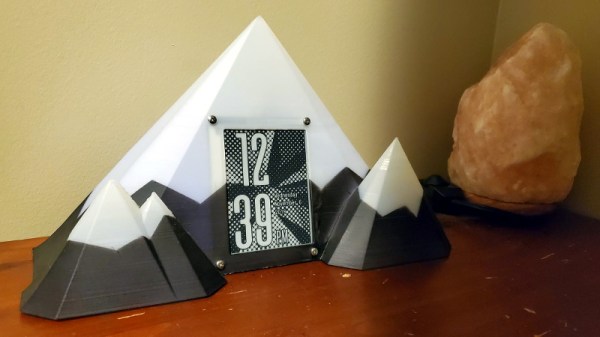Air conditioning compressors aren’t exactly a mainstay of the average hacker’s junk box. Typically, they’re either fitted to a car to do their original job, or they’re on the bench getting refurbished. However, with the right mods, it’s possible to turn one into a functioning internal combustion engine.
The build starts by disassembling the compressor, which contains three double-sided pistons. The housing is drilled with ports to allow gas to flow into and out of the cylinders, as well as to transfer from one side of the piston to the other. Acrylic end plates are fitted to the assembly. One end acts as an intake manifold, delivering air and fuel to the cylinders. The other side acts as the cylinder head, mounting the sparkplugs. Everything is then connected with acrylic tubing and a small square section of acrylic is turned into a carburetor to supply the air-fuel mix. Ignition is handled by coils triggered by the movement of the flywheel.
After an initial failure due to the acrylic manifold cracking, a stronger part is fabricated, and the engine bursts into life. The acrylic end caps give a great view of the combustion process in action. We’d love to see the a dyno graph on how much power and torque the unit puts out, or to see it hooked up to a bicycle or cart.
We’ve seen others attempt their own engine builds, too. If you’ve got an unconventional engine build of your own, be sure to let us know. Video after the break.
Continue reading “Building An Engine With An A/C Compressor”


















